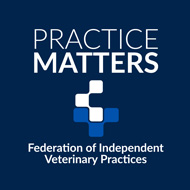Dick Vet study to compare equine MRI and CT scans
Vets Sarah Taylor and Padraig Kelly of the Dick Vet Equine Hospital.
A new three-year study at the University of Edinburgh’s Dick Vet Equine Hospital will compare the use of MRI and CT scans for horses with lameness and foot problems.
The study has been made possible following the delivery earlier this month of a new CT scanner for scanning the distal limbs of sedated standing horses. The equipment has been housed in a purpose-built room at the hospital and will help the veterinary team in their diagnostic work.
During the next three years, horses referred to the hospital for an MRI scan will undergo a CT scan beforehand, at no extra cost to the client. The CT scan will allow the veterinary team to check for metal clenches in the hoof wall before the MRI to avoid the metal migrating in the MRI and causing injuries, replacing the use of X-rays.
Researchers will also look at whether using an MRI or CT scan, or both, is necessary for diagnosing different equine foot conditions. They will use anonymised images to compare the sensitivity and specificity of the two scanning methods for navicular syndrome and coffin joint osteoarthritis.
The findings will help the veterinary team decide which scanner to use when diagnosing patients with equine distal limb problems to minimise over-imaging.
Padraig Kelly, head of the Dick Vet Equine Hospital, said: “We are excited to offer both standing MRI and CT scans at no extra cost to our clients. This will significantly aid the diagnosis of lameness of our patients.
“Having both imaging modalities will also provide an excellent opportunity to do some sensitivity and specificity studies to determine whether CT or MRI is better for detecting different injuries in a horse's foot.”
Image © Shutterstock



 The Federation of Independent Veterinary Practices (FIVP) has announced that its podcast, FIVP Practice Matters, will be returning for a second series next year.
The Federation of Independent Veterinary Practices (FIVP) has announced that its podcast, FIVP Practice Matters, will be returning for a second series next year.